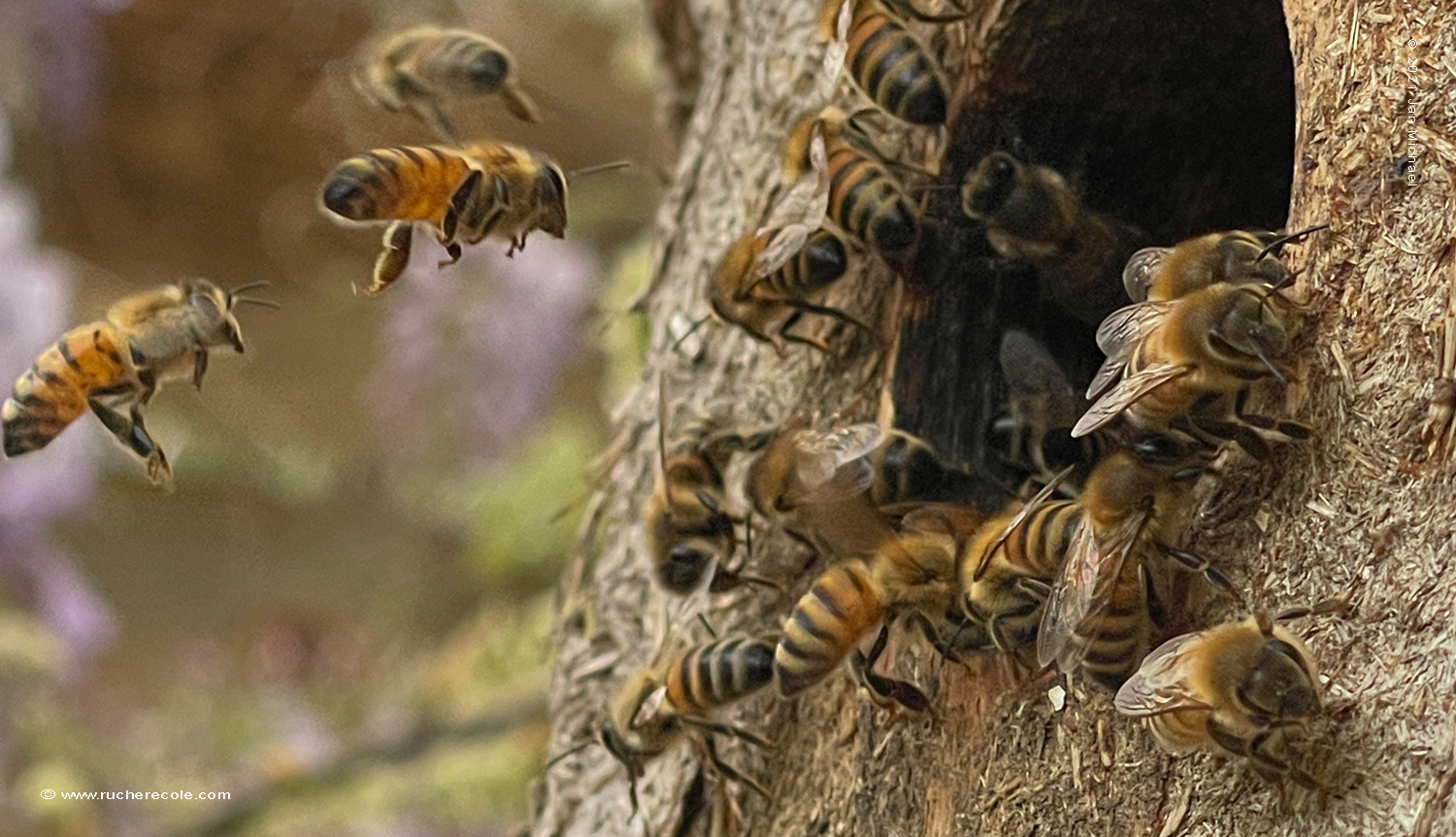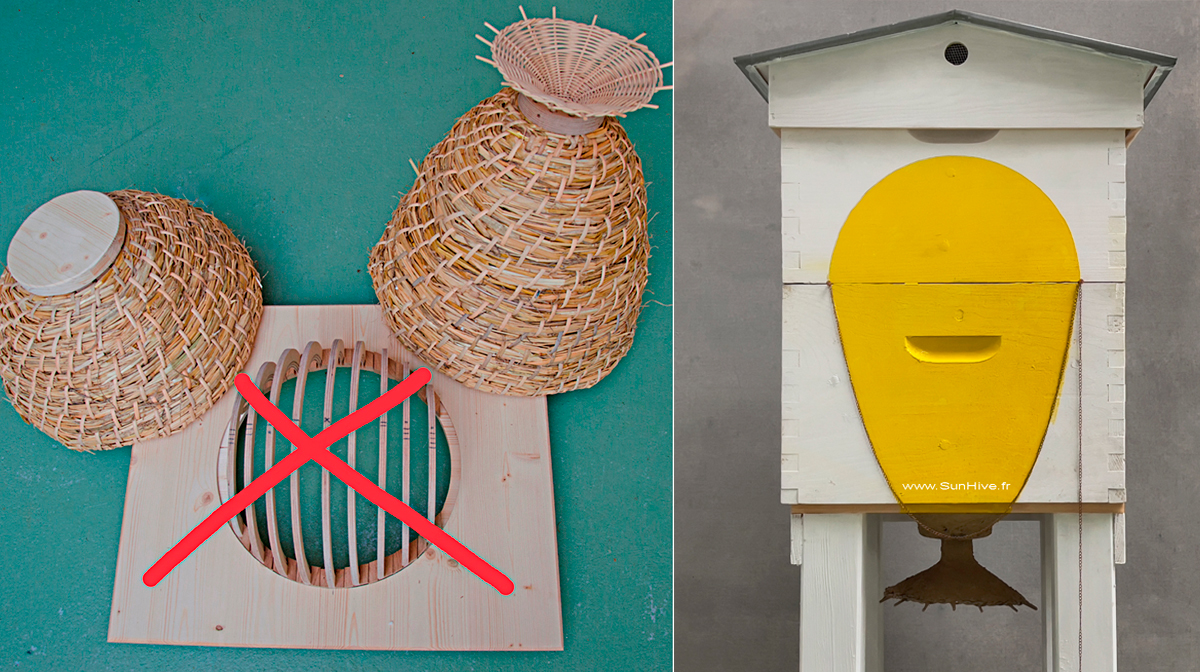Which beehive to choose ?

Conclusion
LOOKING FOR THE BEST BEEHIVE
This is the first question that every bee lover who decides to keep bees at home or in the garden asks themselves. » The best hive will be the one in which the bee feels comfortable and which you enjoy working with, » would be a good answer from the beekeeper’s point of view.
But then there would be a wide choice among the different hive systems such as the Dadant or the Langstroth hive, the one-room golden hive or the top bar hive, a Warré hive, a straw basket, a sun hive or even a log hive, which is becoming more and more fashionable among alternative beekeepers.
If you are a beginner and have contact with professional beekeepers, you may decide in favour of a box hive with frames such as the Dadant or Langstroth hive, which are usually found in the apiaries of beekeeping associations, or because you once saw a report on television about a beekeeper where he pulled the fully occupied bee frames out of the exposed bee nest with smoke and enthusiastically told how to keep bees today.
The omnipresence of the Dadant and Langstroth hive may make it difficult to make your own decision at the beginning and you follow the advice of an experienced beekeeper until you realise that there is another way of keeping bees.
If you want a hive that is as bee-friendly as possible with a little more control through a built-in observation window, a Warré hive is a good choice.
If you are willing to make a Beetower or even a Sun hive with some manual skills and a few tools and assemble it yourself from the commercially available bee boxes, you would get a fairly natural bee dwelling from the bees’ point of view, but you would have to create them yourself because you can’t get hives like this easily at the moment and you won’t get them from any beekeeping shop.
But first you should ask yourself: Why do I want to keep bees?
For fun or even as a sideline, to harvest honey and sell some of it, or so that the bees pollinate flowers and fruit trees in your garden, or because you want to contribute to the conservation of bees and biodiversity, or maybe a bit of everything?

If you are lucky enough to come across an alternative beekeeper, you may decide to use the Warré hive, which is favoured by many hobby beekeepers because of its simple and natural way of working and promoted by dedicated bee enthusiasts, as we also recommend to beginners in our « Rucher Ecole Villa le Bosquet » (apiary for natural beekeeping.)
You may come across a straw hive in your search for other alternatives, as this is a classic very ecological hive that was ubiquitous for centuries before the industrial use of bees with frames and prefabricated combs was invented and increasingly replaced the straw hive.
Nowadays, a straw hive is often displayed as a romantic paraphernalia on the market stalls where honey is sold.
But if you visit these beekeepers on their apiaries, you will hardly find such a basket in which bees live.
How I discovered my best bee hive !
After all those years with the Warré hive, I wanted to do something more for my bees and went in search of the forgotten straw baskets.
So, after a few detours a few years ago,I discovered the Weissenseifen hanging basket, (sun hive) which at that time was still being made with great care in the « Haus Michael » workshop for the disabled according to the designs of the « inventor » Gunther Mancke in Weissenseifen.
In my opinion, the use of frames and the possibility of opening the brood nest means that too many compromises have been made for such an ecological hive, which may well please the beekeeper, but not necessarily the bees.
So that wasn’t it yet and it took some time before I found my now discarded straw basket in the cellar and brought it back to my workshop.

In my new Sun Hive-plus, as I now call it, there are no more frames and no intermediate board, and the bee nest cannot be opened once the bees have built their combs down to the bottom.
Gunther Mancke was probably the first bee lover and artist to develop his hanging basket according to the bee chain line, as he had previously observed exactly how bees build their honeycombs.
Günther Mancke has thus made a great gift to the bees and thus also to the lovers of his hanging basket, which is now increasingly being sought and found by committed bee lovers and has now also been rediscovered by me, but rebuilt in a more bee-friendly way.
Internationally known as the Sun Hive, the bees keep warm best in such a hive and therefore consume much less of their honey reserves, and can therefore better withstand the current challenges of climate change than in the conventional hives offered by beekeepers today.
In fact, the bee tower with the round internal chimney and reed insulation is my first choice if you prefer a little more control with an inbuilt observation window, which is not possible in the sun hive.
But from the bees’ point of view, a sun hive would probably get the best rating as long as the location and management is bee-friendly.
So for me, my sun hive variant, the Sun Hive-plus, as I call my variant , is now my best chosen bee dwelling that can be « given » to the bees, and I thank the inventor Günther Mancke, who initially led me to the Weissenseifen hanging basket with his explanations.
Text: Jan Michael , founder of the educational apiary ‘Rucher école Villa le Bosquet » and beekeeper in Normandy
A Sun hive-plus stands for climate change,combinable or case and is very easy to maintain and much quicker to build by omitting the frames and the intermediate board.
Above all, other natural materials such as sheep’s wool, wood shavings or even more straw and also clay can be added in the surrounding Dadant box, thus insulating the inner hives even better against the effects of cold, humidity or heat, and the nest is also additionally protected from woodpeckers and other troublemakers by the surrounding wooden walls.
Compared to a natural tree cavity, a Sun hive-plus is less exposed to warping and splitting of the solid wood, which can occur naturally in a natural tree and thus expose the nest.

Various bee boxes from the beekeeping trade’s product range can be used for honey harvesting and can be very elegantly integrated into the overall body of the hive to protect it from the wind.
And last but not least, the outer wooden walls of the hive can be painted with decorative motifs, which children love to do.
